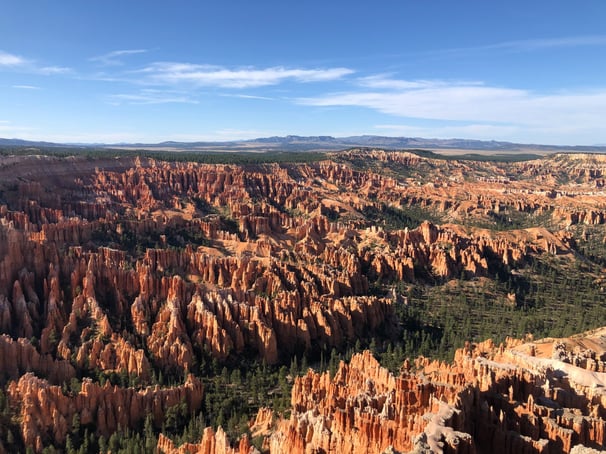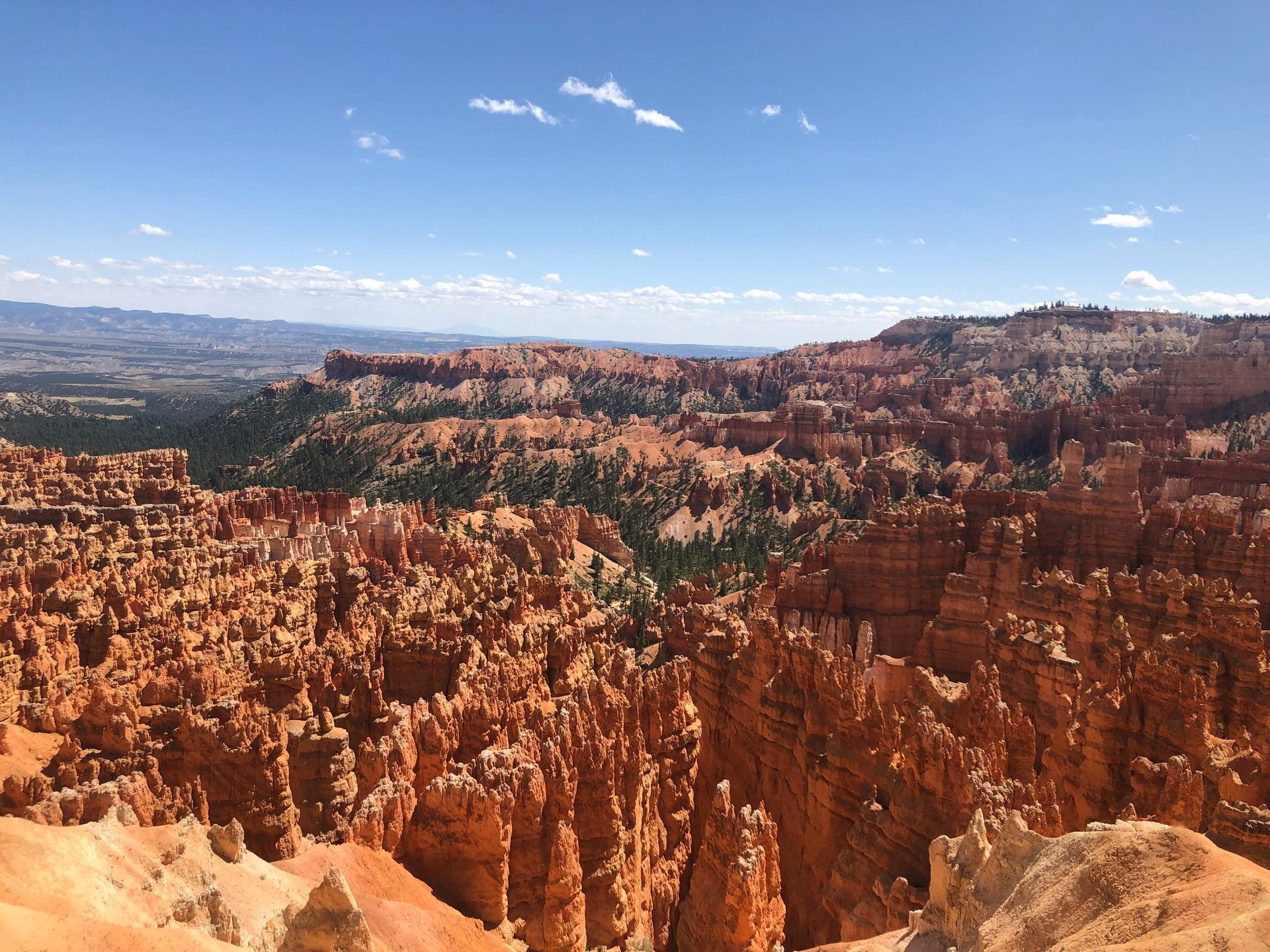
Bryce Canyon NP
(Southern Utah, USA)
General info about the park...
This popular national park in southern Utah averages over 2.4 million visitors per year and is most well known for boasting the largest collection of sandstone rock spires in the world.
Bryce Canyon rose to popularity in 1916 when it became a stop along the Union Pacific Railroad. Later, in 1923 it was declared a national monument. Finally, in 1928 it gained national park designation. Bryce Canyon covers just under 36,000 acres making it one of the smaller national parks in the USA.
Bryce is about 4 hours driving from Las Vegas or Salt Lake City. It's best visited in Spring, Summer, or Fall when temperatures range from 50-75F. You can see most of the park within 1 day.
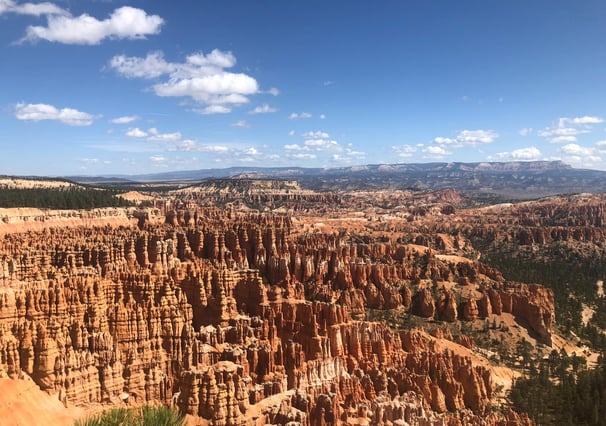

Astounding scenery
The story of the geological wonders referred to as "hoodoos" within Bryce Canyon National Park begins 50 millions years ago when an ancient lake and floodplain system occupied these lands. As millennia went on and tectonic plates of the Earth shifted, rock sediment was uplifted to form the canyon. The last element needed to create these majestic rock formations was weather and erosion. Bryce sits at just the perfect altitude and receives enough precipitation year-round where such weather events could sculpt these unique spires. With an elevation of approximately 8,000 feet, Bryce Canyon sees nighttime freezing temperatures 170 days per year. This incessant freeze and thaw phenomenon has created this awe inspiring landscape. Bryce has the highest concentration of hoodoos in the world with some towers reaching 150 feet tall.
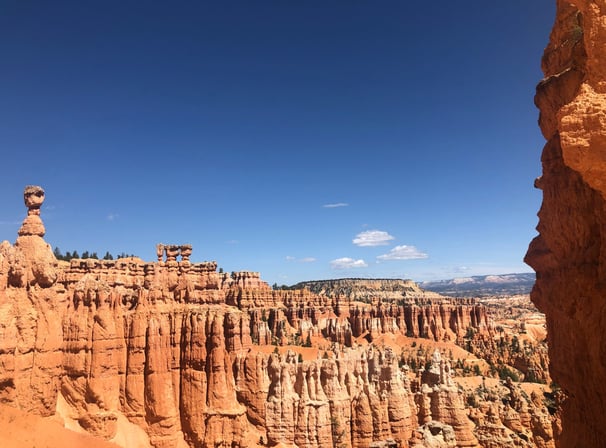

Visitor center & scenic drive
The visitor center will be most tourists' first stop where you can obtain maps, hyper-local weather reports, learn more about ranger led educational programs, and access other services.
The main park road constitutes an 18 mile long scenic drive first taking you to the Bryce Amphitheatre with an amazing panoramic view of hoodoos and then to 9 more viewpoints as you ascend 1,100 feet from the visitor center to the endpoint of the scenic drive at Rainbow Point at 9,000 feet of elevation.
There are parking lots at each scenic viewpoint and many short to medium length hikes accessible from each stop.
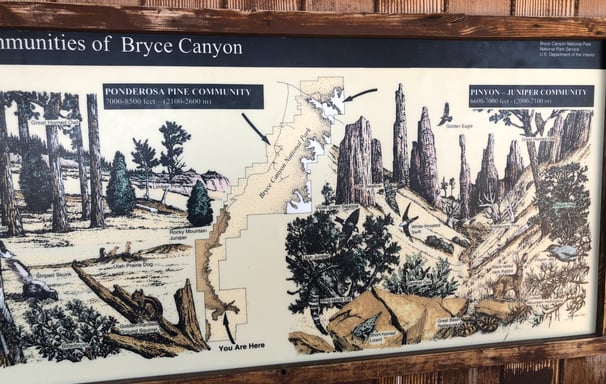

Distinct terrain
As you ascend into the higher elevation terrain of Bryce Canyon National Park, the landscape will shift to a densely forested landscape of Ponderosa Pine. In the canyon below, you will be able to look down into Pinyon and Juniper trees.
This stark contrast contributes to the biodiversity of this park resulting in a wide array of wildlife that live in these lands including elk, black bears, mule deer, and mountain lions. Bryce has 59 species of mammals documented to be living in the park plus 175 species of birds including eagles & falcons. The rare California Condor has also been spotted in Bryce.
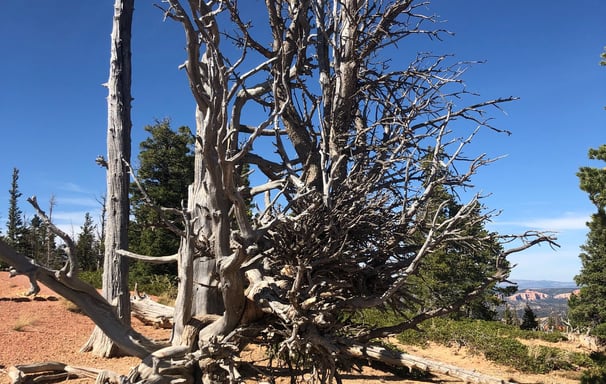

Notable hikes
Easy: Sunset to Sunrise Point (1 mile), Bristlecone Loop (1 mile)
Moderate: Navajo Trail with Queens Garden Loop (3 miles) OR Wall Street with Queens Garden Loop (3 miles)
Difficult: Bryce Canyon Rim Trail (10.5 miles with nearly 1,600 feet of elevation gain); average time to complete 4.5 hours
Backcountry: 23 mile "Under the Rim Trail" with 7 campsites along the trail; inquire at the rangers station for permits; usually hikers complete this trail within 2-3 days max
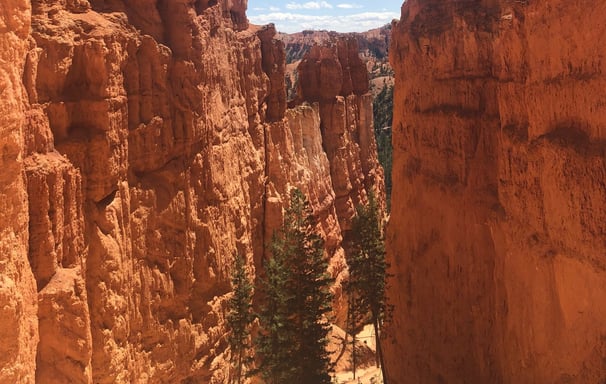

Camping & Lodging
Bryce Canyon has two campgrounds: North and Sunset; both nearby the Visitors Center and the Bryce Amphitheatre. North is open year-round and reservations are recommended in the peak visitation months of May through October. Outside of those months, the campground is on a first come, first served basis. Sunset campground is closed in the winter. From April 15 - October 31 campsites are on a first come, first served basis.
The historic Lodge at Bryce Canyon offers 114 rooms including suites and cabins. The property also has a restaurant that serves breakfast, lunch, and dinner. There is also a gift shop.
Outside of the park Cannonville is 20 minutes away. St George, the gateway city for Zion National Park is about 2 hours away.
